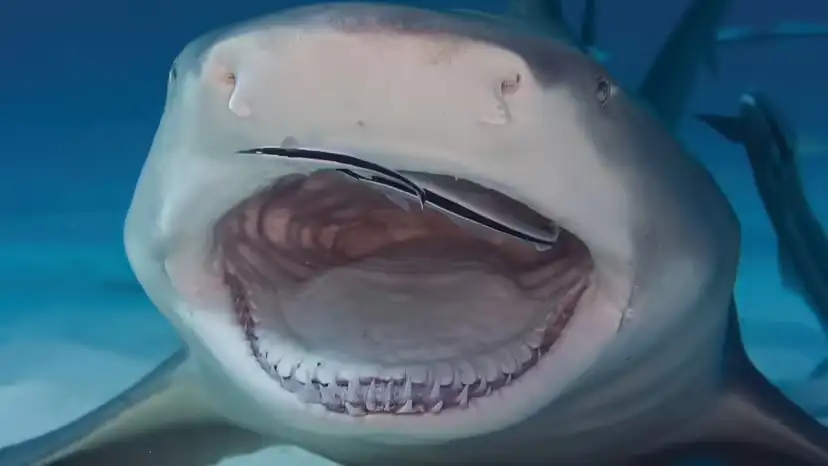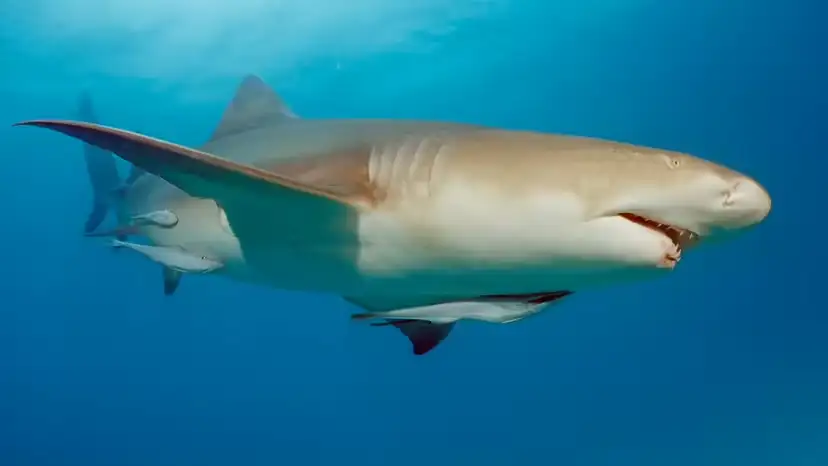The idea of a shark cruising just off the beach usually sets off alarm bells. But meet the lemon shark (Negaprion brevirostris): a large, yellow-tinged coastal species that’s surprisingly tolerant, highly studied, and far more about cruising sand flats than causing trouble. Adults commonly reach up to 10 feet (3 m), can weigh as much as 551 pounds (250 kg), and live around 25–30 years. You can pick them out by their short, blunt snout and two similarly sized dorsal fins set behind the pectoral fins—plus that distinct sandy-lemon hue.

Lemon sharks aren’t canary-bright, but their yellowish-brown to olive coloration is perfect camouflage over pale sand and seagrass. From above, they melt into sunlit bottom; from below, their lighter belly softens the silhouette. This countershading helps them ambush prey and avoid larger predators when young.
These sharks are generalist carnivores that focus on bony fishes (grunts, mullet, mojarras), crustaceans, and the occasional seabird. Larger adults will opportunistically prey on smaller lemon sharks, a not-uncommon behavior among many apex fishes. In turn, juveniles find safety in mangrove shallows, where their prey is abundant and big predators struggle to maneuver.
Lemon sharks spend a lot of time in shallow subtropical water, which means frequent proximity to swimmers and divers. Documented incidents are very rare and none have been fatal. They’re still powerful wild animals—startle one or crowd it and it can bite—but their default is calm, inquisitive, and non-confrontational.
Juvenile lemon sharks often aggregate in loose groups, especially around nursery habitats like mangroves and shallow lagoons. Schooling likely reduces predation risk and may offer foraging advantages. Adults are more solitary, yet they’re known to congregate seasonally at reliable hotspots (reefs, channels, and inlets), suggesting a flexible social life tied to food, reproduction, and safety.

Lemon sharks prefer coastal shelves and lagoons out to roughly 300 feet (90 m), occasionally venturing offshore on migrations but generally staying near the continent or islands. Their range spans:
Western Atlantic: New Jersey south through the Gulf of Mexico and Caribbean, to southern Brazil
Eastern Atlantic: West Africa (Senegal to Côte d’Ivoire)
Eastern Pacific: Gulf of California and Baja south to Ecuador
They may enter brackish and even freshwater, but don’t remain there for long.
Lemon sharks handle captivity well, making them superb model animals for shark research. Decades of work—especially at the Bimini Shark Lab in The Bahamas—have built a deep record on growth rates, nursery use, movement ecology, sensory biology, learning, and social behavior. Tagging and long-term monitoring have revealed site fidelity (sharks returning to the same nurseries and seasonal hotspots) and predictable movement corridors useful for conservation planning.
On the IUCN Red List, lemon sharks are currently Near Threatened. The big pressures are:
Overfishing: caught in commercial, artisanal, and recreational fisheries; fins are sometimes trafficked into the shark fin trade, and skins can be processed for leather.
Habitat loss: mangrove degradation and coastal development erode nursery grounds, reducing juvenile survival.
Protecting mangrove ecosystems, improving bycatch mitigation, and tightening trade oversight are central to keeping populations stable.
If you’re diving in lemon shark country, you may cross paths with these mellow cruisers. For ethical, low-impact encounters:
Give space and avoid blocking a shark’s path.
Stay neutral in the water column; avoid sudden lunges or splashes.
Choose operators that follow responsible shark-interaction codes and avoid harmful baiting practices near nurseries.
Color: sandy yellow-brown, pale belly
Head: short, blunt snout
Fins: two similarly sized dorsal fins set behind the pectorals
Habitat: subtropical, shallow coastal waters; mangrove nurseries for juveniles
Temperament: generally calm, rarely aggressive, often seen in groups when young
The lemon shark flips the stereotype of the perpetual loner predator. It’s a socially flexible, coastal specialist that has taught science a great deal—while reminding us that keeping mangroves healthy and coasts well-managed is good for sharks and people alike.
animal tags: lemon shark
We created this article in conjunction with AI technology, then made sure it was fact-checked and edited by a Animals Top editor.